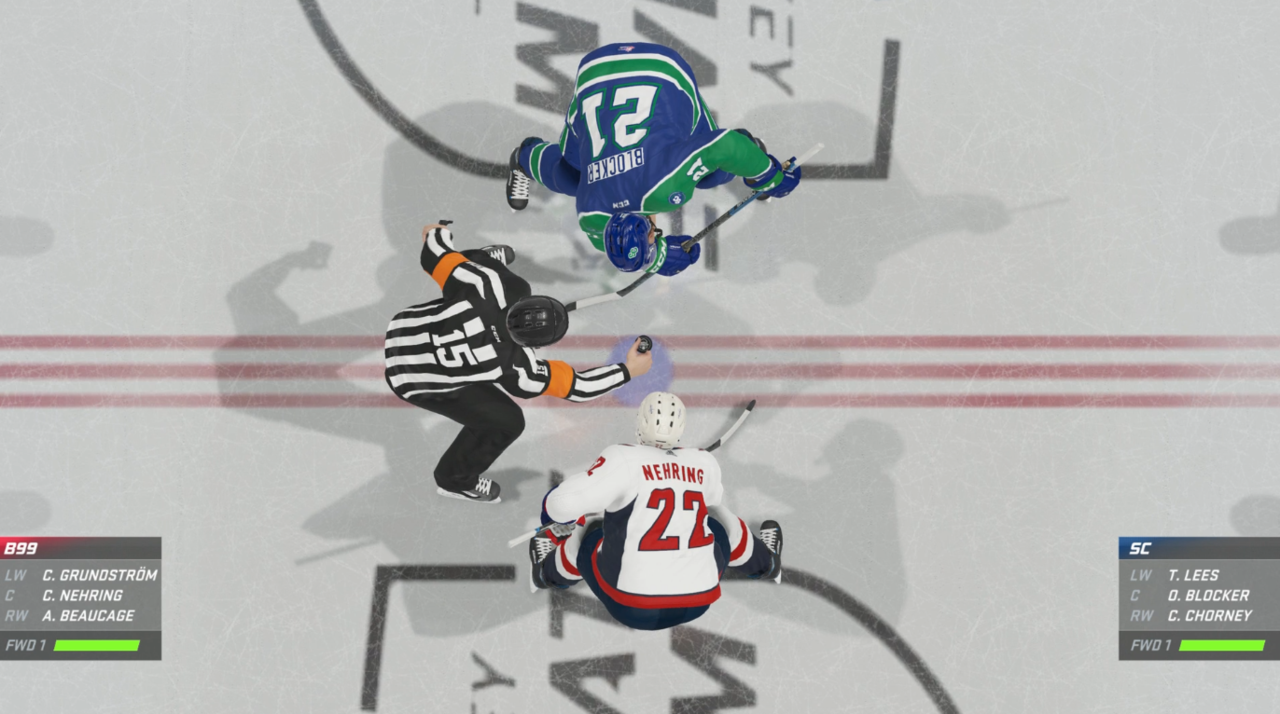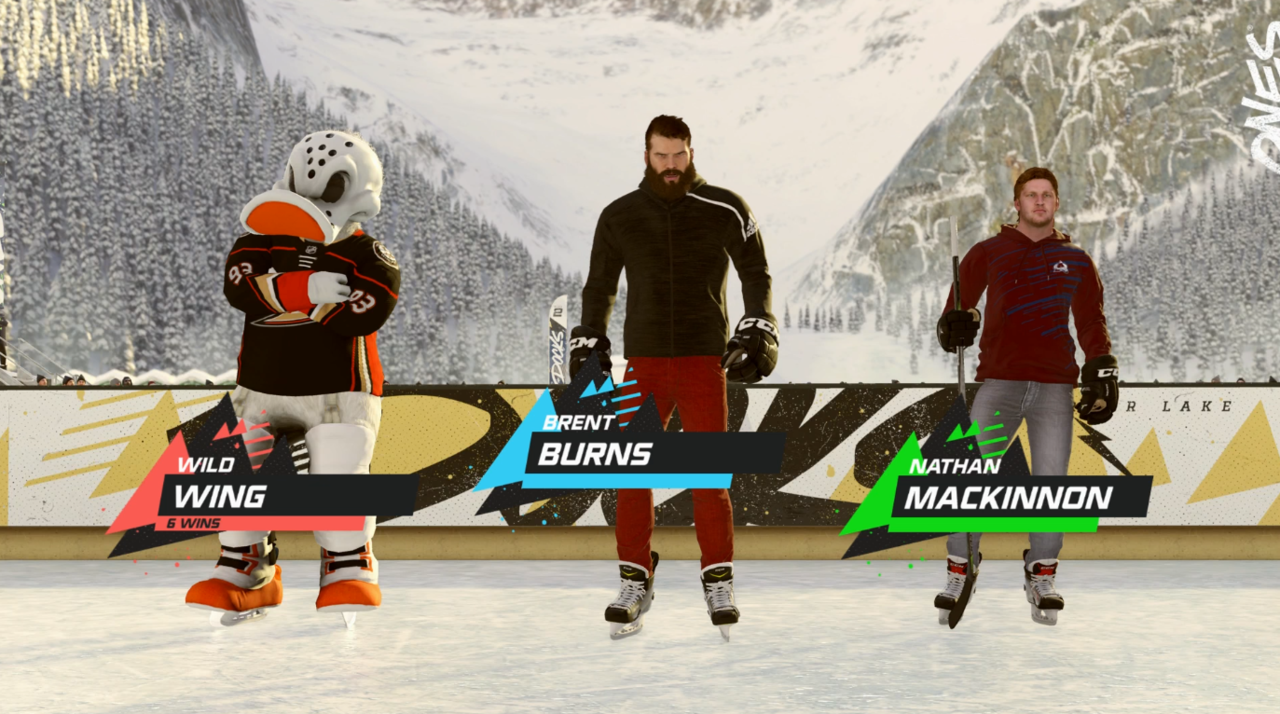With its new commentary team and updated presentation package, NHL 20 represents the franchise's biggest shakeup in years--and they're mostly positive changes. Combined with excellent controls, fluid gameplay, numerous fun and engaging different modes to play, a fine attention to detail and appreciation for hockey culture, NHL 20 is a step forward that is generally excellent.
The biggest change for NHL 20 is its broadcast package. It is almost completely different this year, and the changes--which span commentary, UI, and graphics--are mostly positive but not always for the better. Commentators Mike "Doc" Emerick and Eddie Olczyk are out, while nearly the entirety of the NBC Sports Network license package, including live-action sequences, are gone, too. It's a jarring change, as Emerick and Olczyk have been the voice of EA's NHL games since NHL 15.

The new commentators are Canadian sports radio personality James Cybulski and former player and current rinkside analyst Ray Ferarro. They do a mostly adept job at calling plays with style, flair, and personality, and their back-and-forth banter succeeds at capturing the essence of hockey culture with hockey IQ and knack. Some commentary lines are repeated too often, however, and Cybulski in particular sounds at times like he is hamming it up and acting like every game is Game 7 of the Stanley Cup Finals.
Outside of the new commentary team, NHL 20's updated broadcast presentation includes more colorful and dynamic graphics that display important information in more eye-catching ways. In addition to brighter colors and sharper fonts, NHL 20 introduces more dramatic, slow-motion highlights of goal scores, as well as Overwatch-style "Play of the Period" and "Play of the Game" highlights. These moments do a good job at breaking down key plays, and, with their unique angles and close-ups, provide nice moments to sit back and revel in your achievements.
Part of this updated broadcast package is a new location for the score clock, which is the only major misstep. It's now at the bottom of the screen compared to the top-left in last year's game--and it cannot be moved in the Settings. The new score clock location opens up more space on the screen for action, but I found it positively difficult to quickly and easily see the important information like time left in the game, penalty minutes, and other datapoints while simultaneously keeping my eyes on the action. It's a baffling choice, especially considering many of NHL 20's various other modes keep the score clock where it was. This inconsistency worsens the experience, as you have to train your eyes in multiple ways depending on which mode you're playing.
Authentic Hockey
NHL 20 succeeds the most with excellent, tight controls that give you the freedom to execute basically any hockey move you can think of. There are also changes to animations and skating mechanics that make the game appear more lifelike. Building off what was already the franchise's best foot forward with NHL 19, this year's entry feels faster and more fluid with better animations that more realistically depict important transitional moments like catching a pass and getting intro stride at a quicker pace. Overall, the on-ice gameplay feels faster and more true to the real NHL experience.
There are new shot animations as well, which are contextual in nature and better represent what a shot might look like from a particular part of the ice and depending on angles, power, speed, specific player attributes, and more. In NHL 19, your player would oftentimes still complete the shot animation even if the puck never got to them, which looked very strange, but that rarely happens this year. NHL 20 also introduces "Signature Shots" for a number of the league's best players; one of these is P.K. Subban's booming slapshot and Alex Ovechkin's electric one-timer. It's a treat to see player-specific animations in NHL 20, and it's yet another part of the way NHL 20 faithfully represents the real NHL experience. Additionally, goalie AI appears to be smarter this year, with netminders giving up fewer soft rebounds and making generally smarter decisions during important scenarios.

NHL 20's in-game attention to detail and careful consideration of the sport is astounding. Players look and react as you'd expect them to on a TV broadcast, down to the way players subtly peek back toward their teammates during a face-off to the sharp crackle of skates gliding over outdoor pond ice. On the outdoor rinks, the crimson red glow of sunset over the pond is something to behold. On the ice, the physics system is so realistically presented that I found myself wincing after big open-ice hits.
Unfortunately, NHL 20 doesn't do much in the area of improving player models. In fact, the character models for players, referees, and the crowd appear largely unchanged from last year. When the replay camera zooms in on fans on the glass, you might be wondering what kind of time vacuum the NHL series exists in for people to never age or look at all different from year to year.
Dirty Dangles
The NHL series is known for its tight, precise controls, and this level of excellence continues with NHL 20. No matter what control setup you're using, the controls allow for a complete command of your player with astounding simplicity and a lot of depth at the same time. Puck possession and clever play-making are paramount in NHL 20, and the controls never fail to provide you with many different options to keep the puck, get around defenders, make the extra pass, and light the lamp. You have the freedom to play with as much creativity as you want. The game also features a slick and smart on-ice trainer that reacts to how you're playing and provides dynamic feedback that, for the most part, helps you improve your game.
There is such a level of fine precision with the controls that you can determine the specific angle of a poke-check or toe-drag the puck at just the right time to open space up to make a shot on goal. In essence, the controller's analog sticks feel like an extension of your on-ice stick. The excellent baseline controls stand out even more once you move on to trying out more more advanced techniques. It takes time and practice to learn the dirtiest dangles the game has to offer, but it's deeply rewarding to perform spins and dekes that together combine to give you ample opportunities to play with style and pizzazz.

In addition to the standard hockey simulation, NHL 20 has an abundance of arcade-style modes. The pond hockey mode, Ones--which sees three players on a small, outdoor rink competing against each other--introduces four new locations, including a rink set on a secluded farm and another inspired by the Rideau Canal in Canada. These new locations, in addition to weather effects like snow coming down during games, make Ones an even more authentic and holistically representative depiction of the outdoor hockey experience.
Ones is lots of fun with its stripped-down, back-to-basics recreation of outdoor hockey with fast-paced play and lots of goals. Outside of the new locations, the biggest change for Ones is the introduction of offline play for couch co-op, and this is a very welcome addition after last year's game left it out in a head-scratching move.
The Threes mode, meanwhile, remains NHL's flashiest and wackiest mode with completely unhinged commentary, mascots lacing it up, lots of goals, and big hits. It's the mode I found myself coming back to the most due in part to its quick games relative to the standard simulation mode and constant progression rewards in every game played.
The social hub, World of Chel, returns with NHL 20 with some noteworthy updates. The biggest introduction is the "Eliminator" mode, which is NHL's spin on battle royale. You can go it alone in Ones or team up with two others in Threes to try to survive four consecutive rounds in a bracket to win the tournament. It's a thrilling, incredibly challenging, high-stakes challenge that, like the battle royale games it's inspired by, encourage you to keep coming back and improve your skills.
There is a robust character-creator and you earn XP for everything you do across all of World of Chel's modes. It's rewarding to invest in your character and know that, whatever mode in World of Chel you're playing, you're working towards growing your character with meaningful advancements like new player traits, in addition to nice extras like cosmetic gear. New for World of Chel with NHL 20 are weekly challenges that track your performance and reward you with cosmetics around a particular theme. For example, the launch-week theme is NHL 94, so you can earn all kinds of themed cosmetics like jerseys and other gear. I anticipate coming back regularly.
Elsewhere in NHL 20, the career-minded Be A Pro remains a satisfying and rewarding ride to take as you start your character from the ground floor and build them into a superstar, though there are no noteworthy updates to speak of this year. Franchise, meanwhile, features a new system that gives you multiple team coaches who have influence on the direction of your team today and in the future. The system, which also includes a light conversation mechanic where you can gauge the morale and interest of your coaches, adds a further level of strategy to the already robust Franchise mode that helps you feel like you're really the GM of a pro team. Franchise also introduces a trade-finder system that makes it less laborious to find and make trades.
Ultimate Team returns as well, and its noteworthy addition is the introduction of Squad Battles. These function the same way they do in Madden and FIFA where you go up against HUT squads created by other players or, after launch, sports stars and celebrities. Hockey Ultimate Team is all about grinding to collect new cards, and it remains a fun experience to build a fantasy team comprised of legends and current stars alike, and compete against others.
NHL 20 successfully captures the ice hockey experience from the ponds to big games under the bright lights, with a fine attention to detail and simple yet deep controls that are best-in-class. Once you get over the shock of Eddie and Doc being out of the game, the new commentary team do an adept job of providing informative and playful banter, while the game's multitude of varied modes each have their own distinct feel and appeal that go a long way to make NHL 20 an excellent representation of hockey culture across the board.